Water works
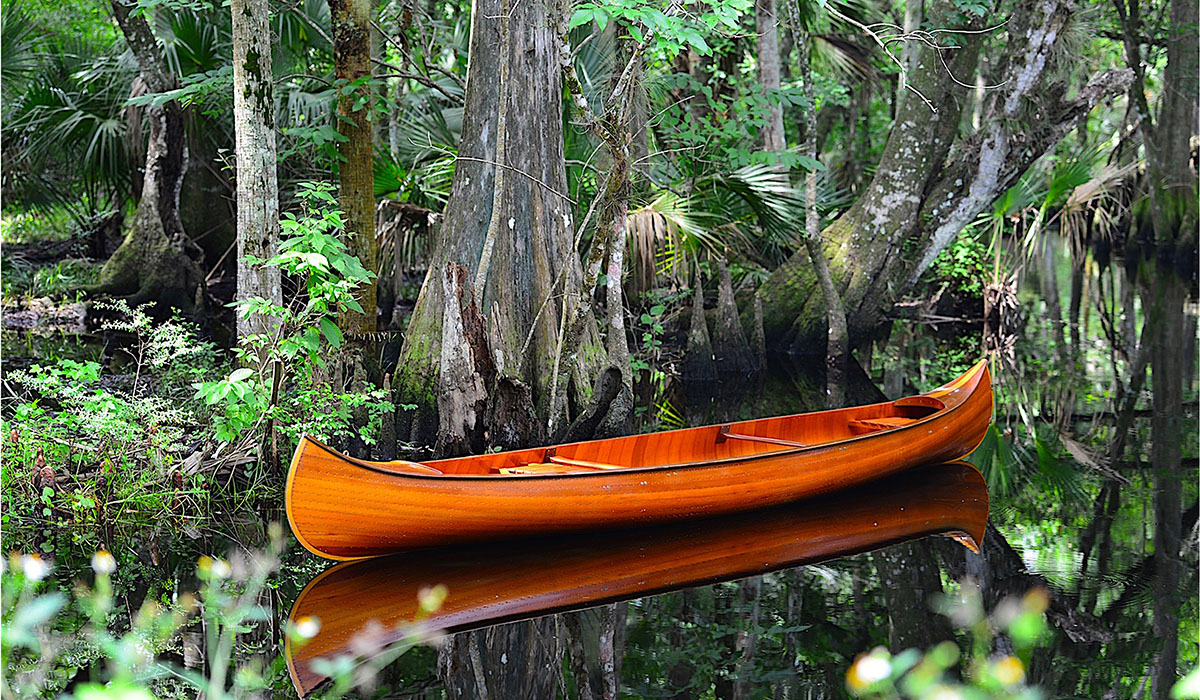
An antique Willits Brothers canoe,built in Tacoma,Washington, sits in the waters of the Tosohatchee Wildlife Management Area in Central Florida. Willits canoes are works of artistic craftsmanship, some of the finest small wooden boats made. MICHAEL GRACE
Restorer finds art and leisure in antique canoes
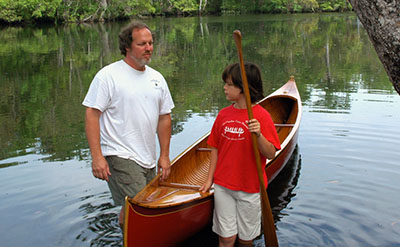
Grace and his son, River, set out on the St. Marks River in Florida’s Big Bend area in their restored circa 1920 Lakefield Canoe Co. craft, built in Lakefield, Ontario.
TANYA GRACE
Picture a canoe. What else comes to mind? Mirror lakes, forests of golden-hued trees, the contemplative quiet of nature. Just thinking about canoes is relaxing; contemplating antique canoes, even more so. Those weathered craft add the romance of long-gone eras and adventures to placid daydreams.
Dr. Michael Grace doesn’t have to think about canoes to chill out, because his West Melbourne residence houses 40 vintage beauties, only a fraction of a collection that also occupies a barn and a storage facility in Georgia. “My wife calls it an addiction,” Grace said.
The professor emeritus of biology at Florida Institute of Technology got hooked while growing up in rural Georgia, where Grace spent many an hour outdoors. There he experienced the sense of freedom he had read about in The Adventures of Tom Sawyer and The Adventures of Huckleberry Finn, books he voraciously consumed. An old aluminum canoe, found under a relative’s house, forever hooked him on this gentle mode of transport. “I would disappear until dinnertime,” he said.
Having succumbed to the charms of canoes, Grace began reading about their history, construction and restoration. While living in Virginia in the ’80s, he chanced upon a classified ad for a late-1800s B.N. Morris canoe for $100. His fate was sealed.
“It was a bargain even then,” he said.
More canoes followed, unearthed through the internet and by word-of-mouth. Now, approximately 100 canoes later, Grace is among the top experts in the field of antique canoe restoration. “Michael has one of the top two or three private collections in the world,” said Les Rue, who knows his boats. He’s the former president of the Antique & Classic Boat Society International, as well as the Antique Boat Society.
“He’s got not only a large number, but also quality,” Rue says. “I’m not in his league.”
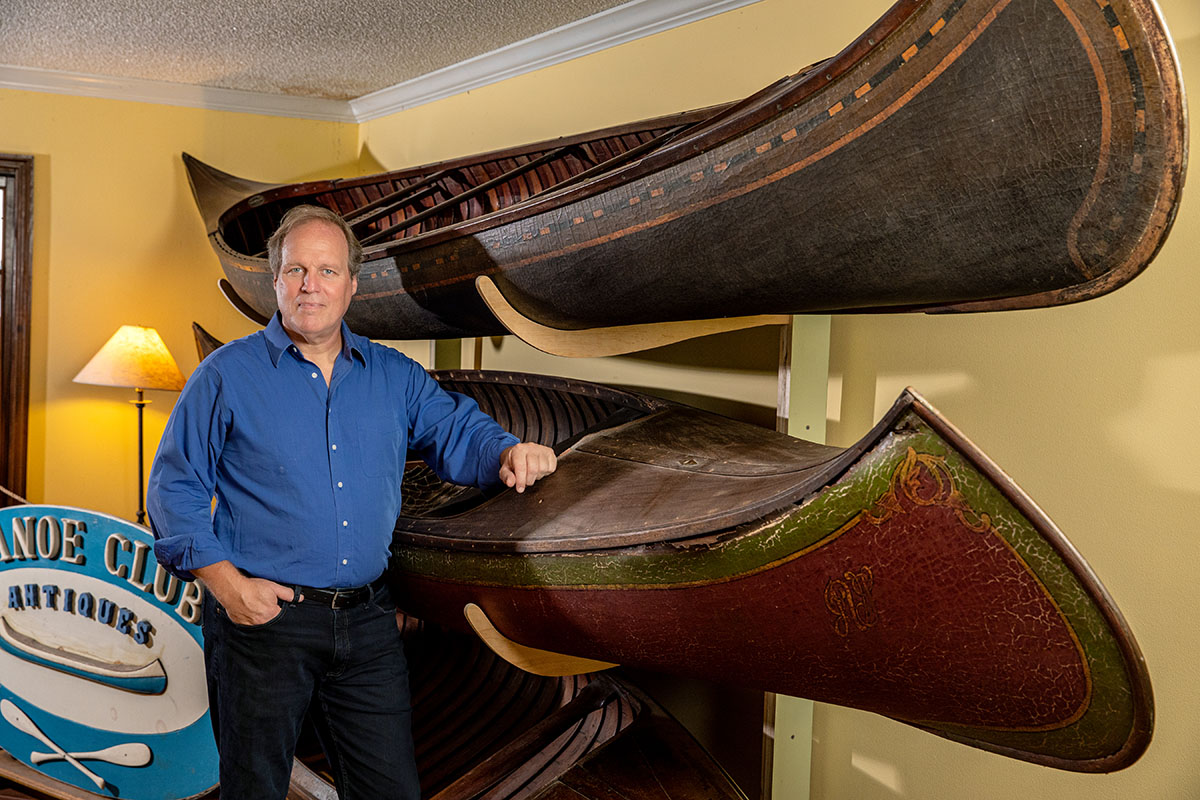
Some of Grace’s unrestored historical canoes are on display in the living room of his West Melbourne home. These ‘courting canoes’ from the early 1900s sport their original fancy paint schemes that were designed to impress the ladies. JASON HOOK
RAVE REVIEWS
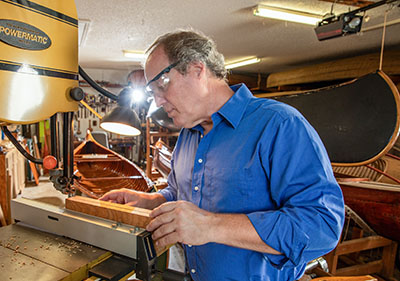
Grace works with a bandsaw in his workshop. His passion for careful restoration using historical techniques and materials brings derelict wooden craft back to functional beauty. JASON HOOK
The collection is so extensive that Grace has been thinking of “right-sizing,” by selling some select pieces to enthusiasts who appreciate the innate grace and beauty of these boats. Not that he will part with many, if the spreadsheet that lists his collection is indicative. “I have the keepers color-coded, and most are in that category,” he said.
A definite keeper is the oldest — an 1872 Dan Herald that is the epitome of craftsmanship, functionality and aesthetics. “Most of these canoes are in museums,” Grace said.
A regular participant at antique boat shows, Grace’s canoes draw the crowds. “Despite our canoes often being the smallest boats in a show, they are usually the most historic,” he said. “They generate rave reviews from the public and show organizers alike.”
The Grace living room canoe collection features a lovely circa 1915 E.M. White from Maine, still sporting its original, elaborate paint scheme. On the floor is a Grayling model canoe, built in the shop of J. Henry Rushton in Canton, New York, in 1890.
“Rushton is perhaps the most celebrated small boat builder in all of history, and his canoes — rare today — are very highly sought after,” said Grace.
Grace’s collection of Rushtons includes a 130-plus-year-old sweet little Bucktail lapstrake canoe. Grace believes it was used by outdoor writer George Washington Sears during his excursions in Florida.
“Boats like these are particularly rare in Florida now, but they were once the norm,” Grace said. He has lectured about the varied wooden canoes — some of which are represented in his collection — used by Florida pioneers and adventurers more than a century ago.
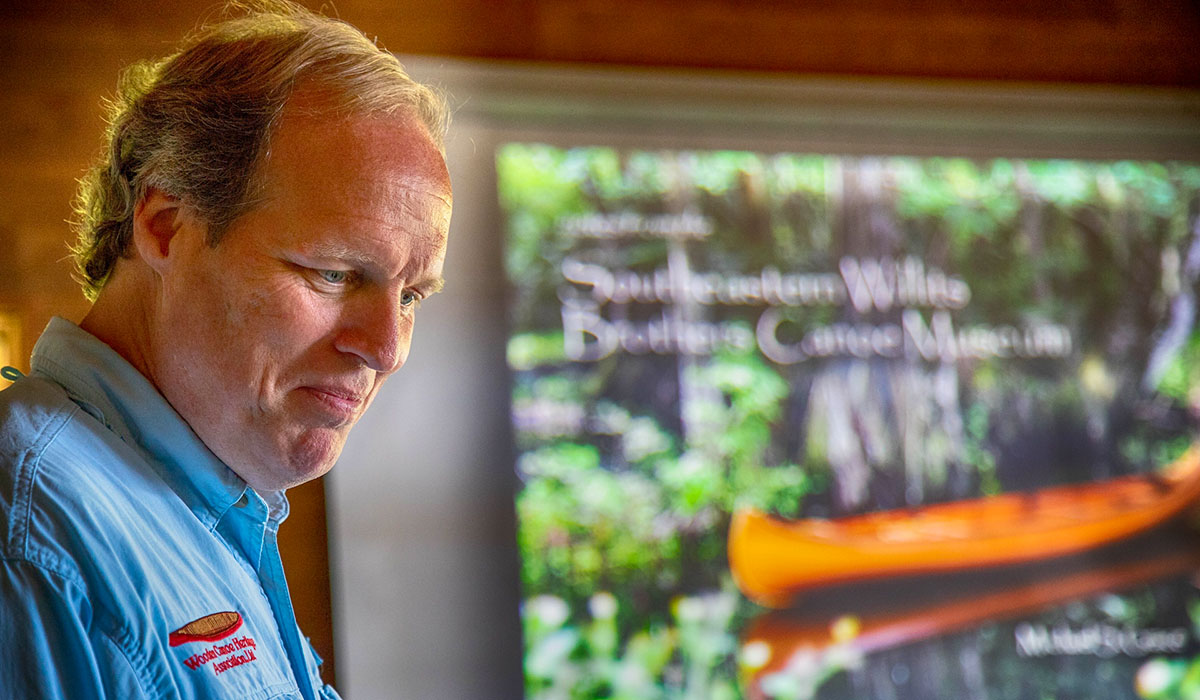
Grace speaks on wooden canoe history during a presentation in Seattle, Washington.
MIKE LIVDAHL
PRIZED POSSESSIONS
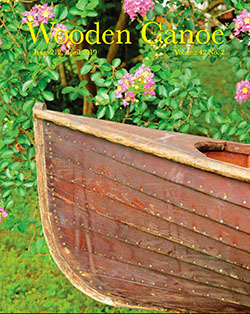
This cover of Wooden Canoe magazine shows Grace’s 1883 Bucktail model canoe, famed for its 1885 Florida adventure. MICHAEL GRACE
Also displayed in the Graces’ living area is a 1920 Charles River courting canoe from Boston. Elaborately detailed and often outfitted with picnic baskets, phonographs and an abundance of pillows, courting canoes made urban rivers into Lover’s Lanes. They were a place where couples could bask in each other’s company in relative privacy — despite police patrolling the rivers to issue warnings against “indecent behavior.” Fun fact: The term canoodling, which means kissing and cuddling, is derived from the romantic shenanigans on board these love boats.
Prized in the Grace collection is Vermillion, a Willits Brothers canoe. Tacoma, Washington, brothers Earl and Floyd Willits built some of the finest small craft ever conceived. “I’m a big fan of Willits canoes and have eight of them that span the company’s history,” Grace said.
The abilities of boatbuilders of yore remain impressive in the 21st century. The Ruth, a turn-of-the-century cedar rib model from the Peterborough Canoe Company, is a case in point. Painstakingly created from tongue-and-groove cedar, the Ruth is both rare and stunning.
“The woodwork is so intricate and precise that this century-plus-old canoe remains watertight today, even though it has no glue, sealants or anything else — just precise craftsmanship and varnish,” Grace said.
Canoes are, for the most part, destined for leisurely pursuits, but there are also the showoffs —like the sailing canoes, such as the 1885 double-masted one that Grace restored. Their very responsive hulls don’t need a huge sail to get the boats skimming over water, but any size sail adds another layer of adventure to the canoeing experience. According to Grace, “You get wet a lot.”
Grace’s canoemania has earned him approximately 100 top awards at antique boat shows across North America, and has established him as an expert who’s often invited to speak on the subject.
THE ROMANCE
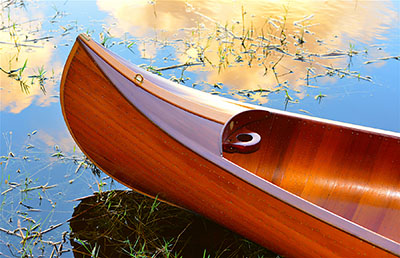
A beautiful Willits Brothers canoe from Grace’s collection sits in a Brevard County lake at sunset. Grace owns eight Willits Brothers canoes. MICHAEL GRACE
His passion has even evolved into a business: Riverboy Canoe & Boatworks restores wooden canoes, skiffs and guide boats for clients across the country. It’s a process that requires months of labor and artisanship — as well as detective work, poring through old catalogs from builders long gone to decipher minute details about the boats. Canoes have even been an integral part of the relationship between Grace and his wife, Tanya. “When I married Michael, I didn’t know about his canoe passion,” Tanya said.
She learned quickly, though. One of the first activities the newly married couple undertook together was building Redbird, a “stripper” canoe made from paper-thin strips of red cedar. Redbird still sings sweetly in the water. “It’s very special to us, because of its sentimental value,” she said.
These classic boats may seem fragile and too precious to put in any old pond. But every canoe Grace restores is structurally sound. The professor has taken these elegant old ladies for many spins around North American waterways, from Ontario’s lakes to the Okefenokee Swamp and Lake Washington. When water and an antique canoe connect, magic happens. Lovingly cared for and allowed to remain in their natural environment, these museum pieces transform into amazing guides — eager to reveal the wonders of the natural world.
“They belong in the water,” Grace says.
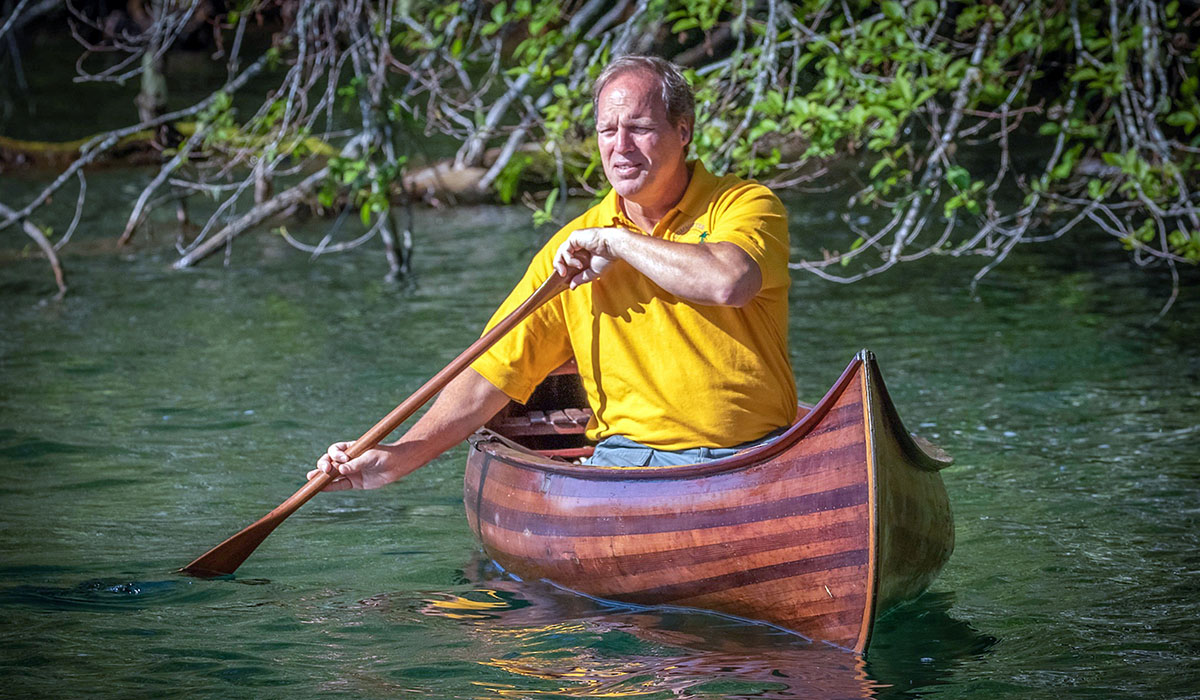
Grace paddles a historical 1925 Willits Brothers canoe on Lost Lake near Shelton, Washington. MIKE LIVDAHL

Maria Sonnenberg
Maria is a prolific writer and proofer for Space Coast Living and an adjunct professor at Florida Institute of Technology’s Nathan M. Bisk College of Business. When not writing, teaching or traveling, she can be found waging a one-woman war against her lawn and futilely attempting to maintain order among the chaos of a pack of extremely clueless wirehair dachshunds and an angst-driven basset hound.




